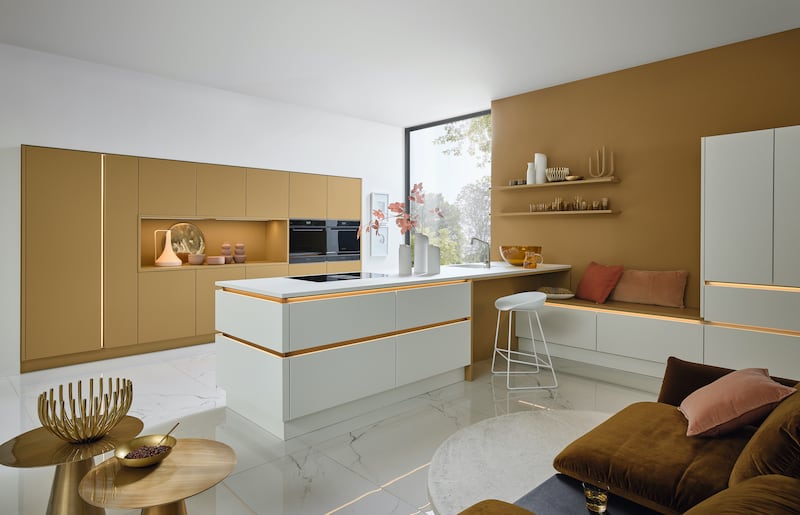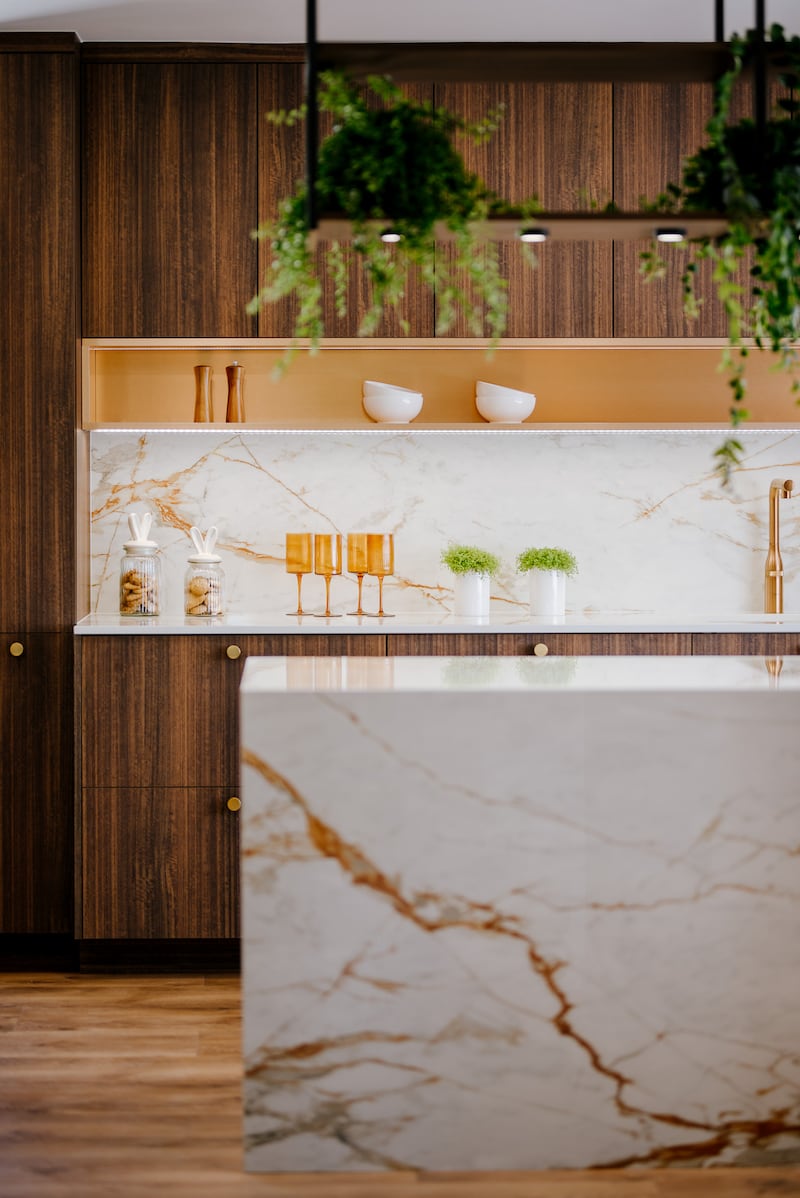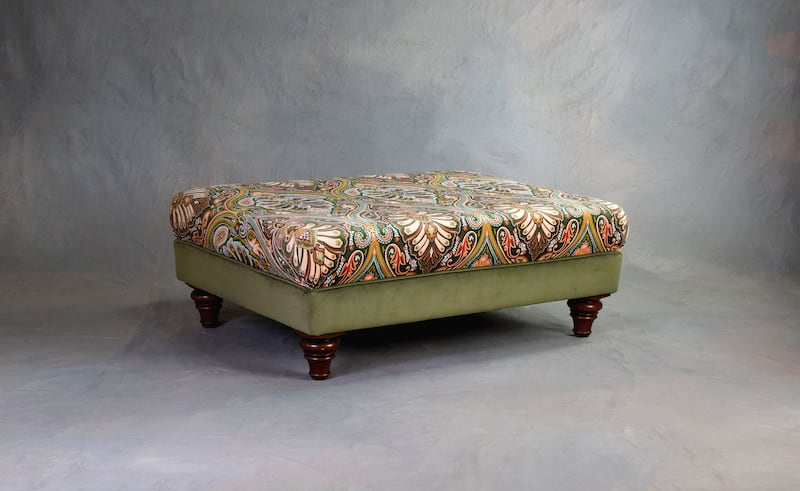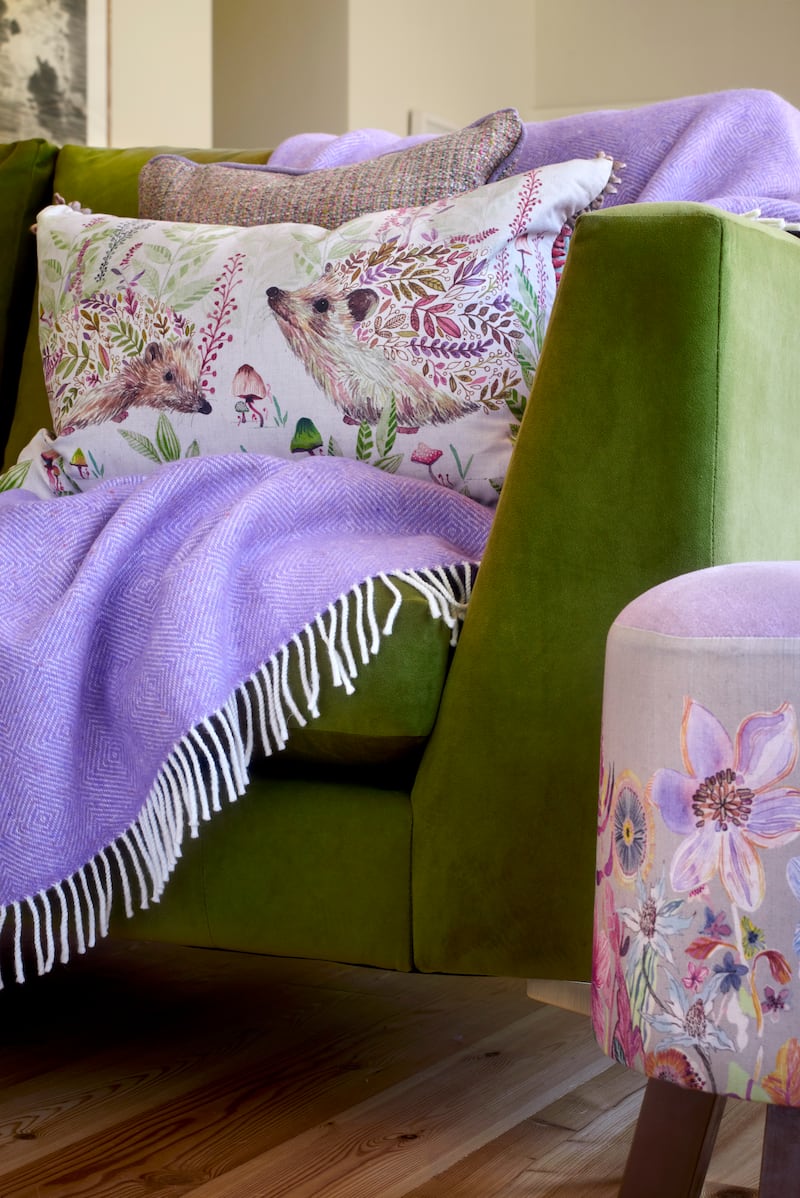The return of maximalism and warm colours, fashion-influenced interiors, and new ways of using natural textures are some of the exciting trends in interiors right now. However, with the 62nd edition of Milan Furniture Fair happening from April 16th-24th, the latest and greatest designs launched there will only become available around September, advises Dave Fagan of Kube Kitchens. He’ll be keeping a particularly keen eye on developments, as this year sees the return of the biennial kitchen exhibition EuroCucina, which runs alternate years to the lighting showcase Euroluce.
Fuorisalone, the fringe event taking place in Milan during the week, follows the theme of Materia Natura this year, exploring the dynamic between matter and nature, creativity and sustainability. This aligns with the growing demand Fagan has noticed from his customers, who are looking for sustainability, energy efficiency and smart home features, with a focus on creating a more relaxed and comfortable atmosphere in their homes.
While exam season and summer holidays tend not to be preferred times to renovate, he suggests – for anyone thinking of changing their kitchen later in the year – doing the research now and being ready to order in September when manufacturers launch new ranges, in order to be done and dusted in time for Christmas.
“It’s best to choose a relatively classic base and add in trends with more movable and replaceable items if you want to get a long lifespan from your investment in the kitchen,” Fagan says.
RM Block
In much the same way that chic hotel rooms have influenced home bedroom design over the past number of years, Fagan has seen a similar phenomenon occur with kitchens, with clients looking to recreate a hip cafe vibe in their own homes. He puts it down to the rise in remote working.
“Now people aren’t in cities as much, they want to come downstairs and feel that restaurant or cafe experience at home,” he says. “People will bring in pictures of their favourite cafes and it’s achievable because our suppliers can provide that level of product and finish.”
Fagan sees a growing popularity of home offices and built-in pantries in kitchens, with demand strong in dark, textured finishes such as stone and concrete. There is also warmth coming from caramel colours, inspired by the fashion of “latte dressing” in warm brown, tan and cream tones (as seen on clothes horses including Meghan Markle and Hailey Bieber). Think of the sophistication of the quiet luxury trend inspired by the understated uber wealth in TV series Succession – muted tones and luxury fabrics.

These cosy, luxurious vibes are also picked up in the textures of kitchen finishes. Kube Kitchens are doing ultra-lightweight stone-fronted kitchen cabinet doors, which add a tactile layer and point of interest to neutral colour schemes.

Meanwhile Instagram has been awash with the “unexpected red” hashtag – using a pop of red in an otherwise fairly neutral room to give it a point of interest. You can pick the shade out with a small, low-investment piece such as a vase or cushions, or try an upholstered chair such as the Hala Bala chair that Sofa Factory find to be a perennial favourite with their customers.
Orla Mangan from The Sofa Factory reveals they have a collector scouring central Europe for the much-sought-after design, which they then strip, polish and custom upholster for clients.
“The trend now is for statement fabrics, with stain-guarded cloth,” Mangan says. With such a chair typically requiring only three metres of fabric to upholster, clients are willing to invest in high-end patterns, from brands such as William Morris and Osborne & Little.
The move towards maximalism has also impacted on headboards, which Mangan says has been influenced by London interiors, “with layered patterns and colours, following the lead of hotels like Soho House”.
Ottomans are also increasingly popular due to their versatility – not just somewhere to put your feet up, or extra seating in a pinch, pop a tray on top and it’s also a coffee table. An added bonus: the soft edges are much safer for a toddler than a hard-edged coffee table.

When it comes to couches, she says: “We’ve seen a love for pattern and colour creeping back in; over the last two years we’ve gone from 95 per cent plain sofas to maybe 70:30 plain to pattern.”
Mangan typically sees people thinking about reupholstering a sofa after, on average, 15 years. However, business is booming as many people typically have multiple sofas per house.
While there was a time when a home might have had one or two couches (one in the real sittingroom, one in the “good room”, still covered in plastic) now people want multiple sofas for various parts of their home, from a media room or snug to a games room for kids, or a chaise longue in the master suite.
In terms of shape trends, Mangan still sees the style of house dictating the type of sofa.
“If you have a Victorian house you’ll go for something more traditional; the high ceilings need a ‘dressier’ sofa. Then we have contemporary ones that are linear in shape which suit newer houses or modern extensions.”
Looking across the sea of sofas in The Sofa Factory showroom, it’s easy to observe the waves of colour washing in. Greys, creams and beiges were replaced first by misty blues and greens; now warm, spicy Mediterranean colours have started to edge their way in.
Grainne Kavanagh, an interior designer who runs The Coach House in Dingle, Co Kerry, where home furnishings and accessories mix with a covetable selection of jewellery and gifts, is an expert in gently guiding her clients to bring a little colour into their lives.
“Generally when I meet people they come with various clippings and ideas, and it’s great,” she says. “But I would often ask them to show me their favourite garment or favourite painting, or tell me who their favourite artist is, to get a sense of their personal style, and tie the design back to them.”
After the grey trend long outstaying its welcome, Kavanagh suggests adding small, subtle pops to ease back into the world of colour. The Coach House has collaborated with Donegal weavers McNutt on a range of herringbone-patterned fine merino blankets and matching cushions in soft hues – including pink, green, yellow, blue, and lilac – where the colour is tempered with a cream in the herringbone.
“Once people develop that initial confidence from one or two colourful pieces they’ll sit with that, then they’ll begin to add to it and go from there,” says Kavanagh.

With any decor project, she always reminds people to think about how the light changes throughout the day, something that’s particularly relevant when starting to play around with colour. A top tip: “Take a picture of the room in the morning and again in the evening to see how the light moves through the room, because every space changes with light.”
The use of natural materials is the trend Kavanagh is most enthused about.
“With my love of nature, I’m drawn to natural surroundings,” she says. “I’m really happy to see timbers coming back in fashion for kitchens. In terms of colours, the greens and the browns and the colours of nature feel very nurturing in the home.”
When it comes to using different woods, she counsels a bit of bravery.
“Just because you have an oak kitchen or an oak floor, it doesn’t mean that you need to get backed into a corner. Don’t be afraid to put all your timbers together. They’re all first cousins, so they will sit beside each other,” she says.
“At the end of the day, your home is your haven. You have to turn the key and walk in the door and feel secure and supported and nurtured by that space.”

















